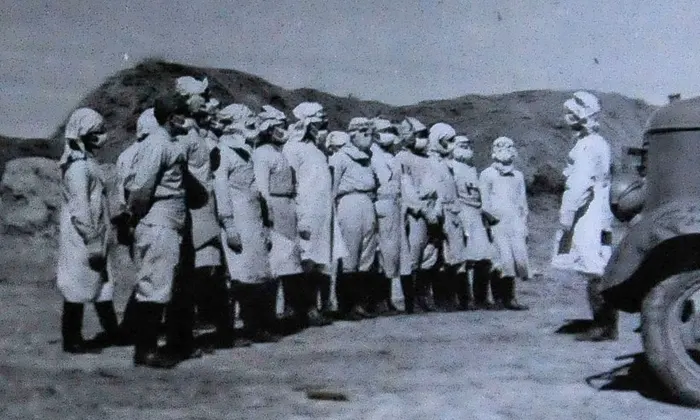Biological weapons, also known as germ warfare, involve the use of biological toxins or infectious agents. This can include bacteria, viruses, or fungi. Biological warfare uses non-human life to disrupt or end human life. But did you know how the Japanese Army infected Chinese and Korean civilians with the Plague?
In the 1940s, the Japanese army developed specialized bombs containing live mice to infect Chinese and Korean civilians with the Plague. The plague has a 70% mortality rate if not treated immediately.
The Biological Warfare that Plagued China
A Tokyo court acknowledged that Japan had engaged in biological warfare, slaughtering thousands of Chinese civilians in one of the worst atrocities of World War II.
To the chagrin of many victims and their families, it denied compensation claims because international peace treaties had resolved all reparation issues at the government level.
The presiding judge of the Tokyo district court, Koji Iwata, said the imperial army violated the Geneva and Hague conventions by spreading plague, typhoid, and other diseases in Quzhou, Ningbo, and Changde between 1940 and 1942, with the public gallery packed with plaintiffs’ supporters holding photographs of the dead.
The evidence shows that Japanese troops, including Unit 731 [the secret experimental unit] and others, used bacteriological weapons on the orders of the imperial army’s headquarters and that many local residents died
Kohken Tsuchiya, Head of the Plaintiffs’ Legal Team
His quick decision ended a five-year legal battle in which 180 primarily Chinese plaintiffs sought approximately £55,000 in damages for the pain and suffering caused by Unit 731.
However, the landmark confirmation of the germ warfare program is an embarrassment to the government, which has long dismissed Unit 731 allegations due to a lack of evidence. For years, school textbooks were prohibited from mentioning the unit’s existence, but plaintiffs’ lawyers predicted that the verdict would change perceptions. (Source: The Guardian)
Confessions and Testimonies about the Biological War
During the five-year trial, Unit 731 veterans admitted to participating in live victim vivisections, cultivating anthrax, typhoid, cholera, and other viruses, and dropping plague-infected fleas over villages.
Elderly plaintiffs flew from China to testify, often in tears, about diseases that ravaged their communities after Japanese planes flew low overhead and dropped flea-infested wheat, rice, or cotton.
Following the war, the Japanese army burned most of the facilities used by Unit 731, and the US granted Ishii and his colleagues immunity in exchange for their research findings. As a result, their activities were not mentioned during the Tokyo war crimes tribunal.
Yesterday’s decision only partially filled the void left by that omission. Historians estimate that the death toll from biological warfare may have been as high as 300,000, but the plaintiffs sought compensation for only 2,100 people for whom they had names, addresses, and dates of death.
Despite the long-awaited legal recognition of Unit 731 atrocities, many plaintiffs expressed dissatisfaction with the rejection of their compensation claims. “I’m enraged,” said Chen Zhifa, a frail 71-year-old who witnessed his father and elder brother perish in agony after the plague struck their home in eastern Zhejiang province. Biological weapons are not like ordinary bombs because their impact and suffering grow long after the initial attack. (Source: The Guardian)
Image from TheGuardian
